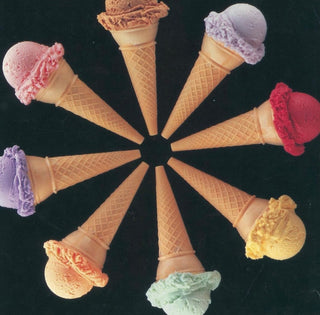
By @chrisbardawil founder of @coreflexpilates
History of Pilates
German anatomist, Joseph Pilates, created the Pilates training program, which focuses on the mind and body. It addresses all muscle groups in the body and improves posture, functioning, core strength, and flexibility through a series of precise, controlled movements.
As Joseph Pilates likes to say, "The mind, when housed within a healthy body, possesses a magnificent sensation of power." Pilates was a major believer in the relationship between our mental and physical health. He founded his first Pilates studio near the New York City Ballet, and the discipline was used to help injured ballerinas recuperate. The Pilates method then went on to become one of the most well-liked low-impact exercises for developing strength and a long, lean body in the 1990s.
What It Is
Pilates seeks to offer a dynamic workout with an emphasis on strength, posture, alignment, and isolating various muscle groups. Many people may find it difficult since the muscles targeted, such as those in the inner thighs and hips, are not ones that most of us use frequently. You can expect a wide variety of exercises - many of which you may have done before in some form or variation. It can change your body and mind with time and persistent practise. The combination of activities wakes up the body and activates any dormant muscles. Additionally, when the hips, back, and shoulders are opened up you will feel a massive tension release, and leave the workout feeling calm and tension-free.
Benefits
Pilates is a great tool to increase strength, muscle tone, and flexibility. Specifically the glutes, hips, lower back, and core. Pilates has the advantage of being a low-impact activity that people enjoy and therefore will keep doing. Classes tend to be full-body workouts with a focus on muscular stability, hip health, and core strength.
Pilates makes sure the body works in a balanced manner keeping muscle strength equal on both sides of the body. As Pilates requires a good level of balance and coordination, it will also encourage you to maintain muscle control which naturally degenerates as we age. So it's something to keep up for life.
Best Home Exercises
Here are three simple bodyweight exercises that can be done at home. They’ll help with posture, core strength and mobility.
T-Fly - Lie facedown on the floor, extend your arms out to both sides and let them rest on the floor, make sure your thumbs are facing the ceiling. From here squeeze your shoulder blades together, raising your arms as far as possible while keeping your chest on the floor. Do your best to keep your shoulders down and away from your ears. Repeat for 3 sets of 10 reps.
Dead Bug - Lie on your back with your legs in tabletop position (90-degree angle) and your arms in the air straight above your torso. Slowly lower your opposing arm and leg to the floor. Return to the centre and repeat on the other side. That’s one rep - repeat 3 for sets of 10 reps.
Bird Dog - Get on the floor on your hands and knees. Make sure your hands are beneath your shoulders and knees beneath your hips. Your back should be flat and stable. Lift one arm and the opposing leg, extend them so they stay parallel with the floor. Make sure to keep your back flat and not to “dump” all your weight in the supporting knee. Pause then lower and repeat switching sides. That's one rep - repeat for 3 sets of 10 reps.
Reformer versus Mat
Mat Pilates utilises bodyweight only to create resistance for exercise, whereas reformer pilates adds spring resistance.
Pilates was originally designed to be done without equipment, using your bodyweight to create resistance against gravity. Therefore you must be in full control of your body rather than assistance from the springs/machinery. This makes it great for beginners as it encourages you to develop body control and use your muscles properly.
Reformer Pilates uses the reformer as a support system for the body assisting proper form. You can then add further resistance to exercises using different spring loads which can challenge you further. The springs can also be lightened to encourage stability and freedom of movement. Add to this the pulley system of the reformer and it greatly expands the repertoire of exercises available opposed to mat work.
Who Should Do it
Pilates is ideal for anyone looking to get their fitness on track, especially mat pilates which can be adjusted to suit all levels. Reformer and Mat Pilates compliment running, cycling and any other exercise which creates repetitive strain on joints. It will give you the core strength and joint mobility required to stay injury and pain free.
Reformer Pilates is also a great mixed workout for people looking for some resistance training, flexibility, core strength and general conditioning. So if you're looking for a one stop workout a reformer class maybe just what you're looking for.
Anyone can benefit from Pilates. It doesn't matter whether you're training for a marathon or just wanting to prevent injury and get a good workout, just experiment with different classes to see what suits you and try it 2-3 times before coming to any conclusions as your first pilates class can be tough!
Pilates and Yoga: What's the Difference
This is a question I get a lot so here is the best way to sum it up: Yoga is focused on flexibility and long holds of exercises. Pilates on the other hand is more dynamic and has a focus on strength, and posture making your body functional. Yoga also has a spiritual side which Pilates does not, you’ll just finish your pilates class feeling two inches taller, lighter and more in touch with your body.
References:
Stott, S. (2002). Pilates. London: Connections. Paden, L. (2014). Pilates. New York: Alpha, A Member Of Penguin Group (Usa) Inc. Eisen, I. (2015). Pilates. New York: Rosen Publishing.















